This material is based upon work supported by the National Science Foundation under Grant No. IIA-1301726.
2018 Graduate Student Poster Session
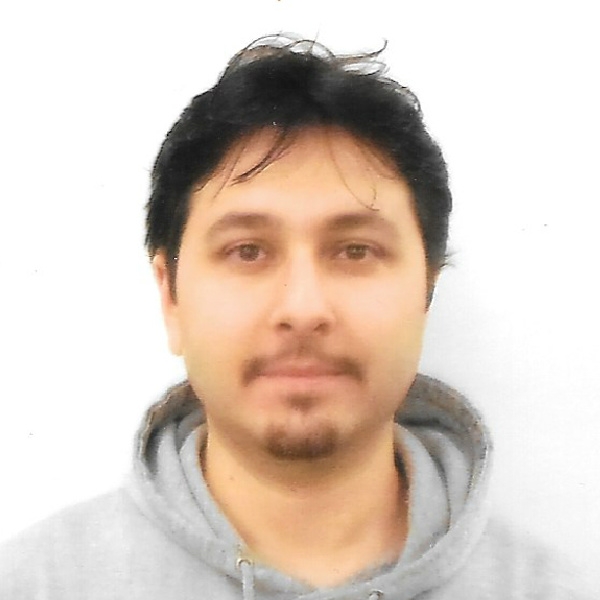
Operating System Fingerprinting via Automated Network Traffic Analysis
Authors – Ahmet Aksoy and Mehmet Hadi Gunes; University of Nevada, Reno
Read Abstract
Operating System (OS) fingerprinting is the process of remotely detecting a system’s OS through packet signatures generated by it. Detecting OS is important for determining system vulnerabilities, improving cyber security, and identifying potential attacks. Operating System (OS) detection significantly impacts network management and security. Current OS classification systems used by administrators use human-expert generated network signatures for classification. In this study, we investigate an automated approach for classifying host OS by analyzing the network packets generated by them without relying on human experts. We present a completely machine learning dependent OS classification approach and perform single-packet OS classification on network packets which originate from host devices. Specifically, we perform OS classification on a single sniffed packet by extracting and checking the packet’s protocol header information. While earlier approaches look for certain packets such as SYN packets, our approach is able to use any TCP/IP packet to determine the host systems’ OS. We use genetic algorithms for feature subset selection in four machine learning algorithms (i.e., OneR, Random Forest, Decision Tables and PART) to classify host OS by analyzing network packets. Different types of network packets yield different features that can be used for classification. For each type of network packet, and for each of the four classifiers that we use, a genetic algorithm (GA) evolves a subset of packet-type dependent features relevant to OS classification. The evolved feature subsets have fewer features and the lower numbers of features enable faster system classification performance. Furthermore, these evolved features generally lead to improved classification accuracy and lower classifier complexity. We conjecture that the GA eliminates features that do not contribute to accuracy or add noise and thus decrease accuracy. The reason why we used GA is due to large search space of feature combinations in the protocols. Feature subset selection is computationally expensive but cheap, distributed computing power makes this a non-issue in practice. Collecting the data needed for training however is a different issue. Our approach’s accuracy depends on the quality and quantity of data collected. With the help of feature subset selection and machine learning, we can automatically detect the difference in network behaviors of OSs and also adapt to new OSs. Results show that the genetic algorithm significantly reduces the number of packet features to be analyzed while increasing the classification performance.
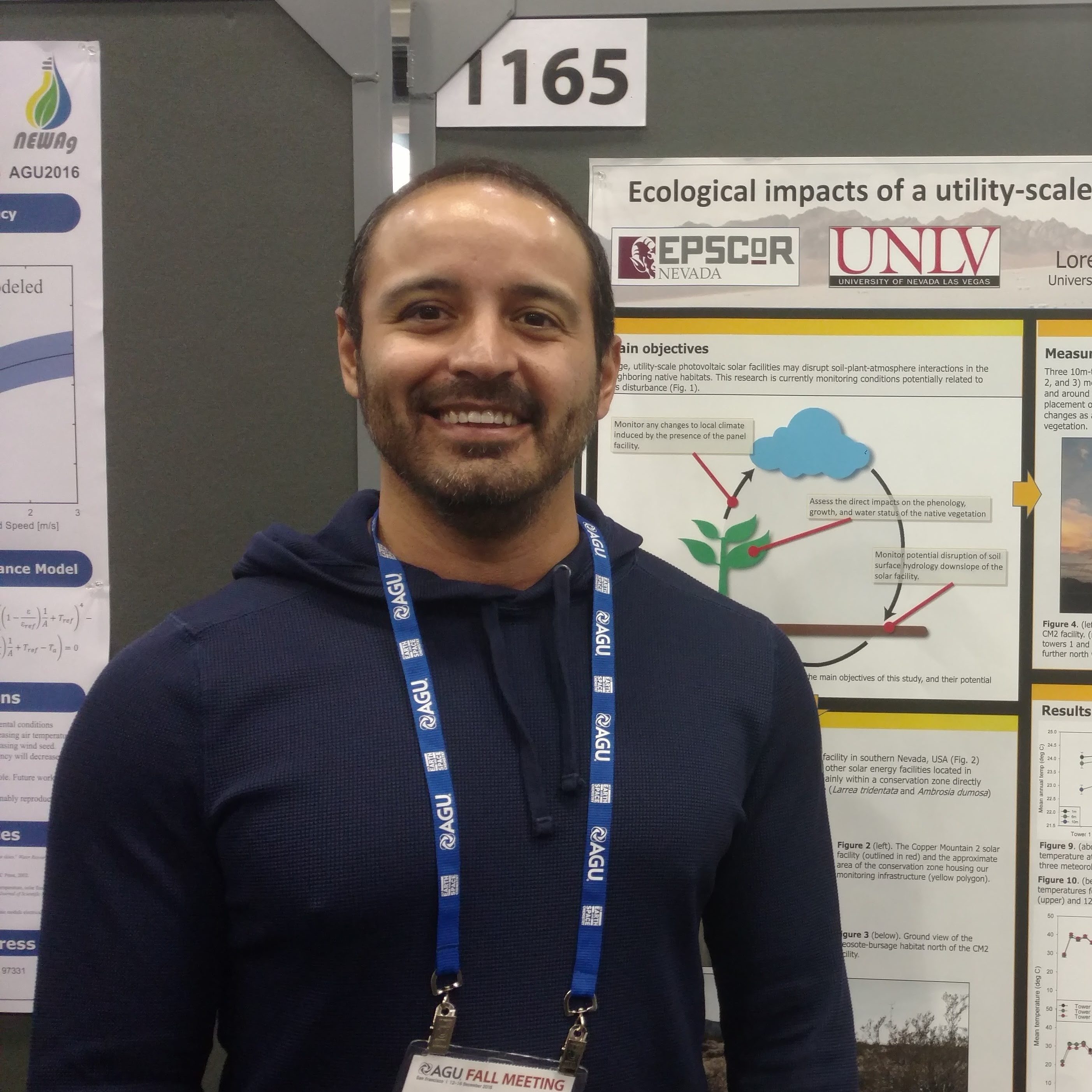
Ecological Impacts of a Utility-scale Photovoltaic Panel Facility on a Creosote-bursage Plant Community
Authors – Lorenzo Apodaca and Dale Devitt; University of Nevada, Las Vegas
Read Abstract
High energy demands and greater financial viability have propelled recent growth in the solar energy market. Southern Nevada is poised to become a major contributor of green energy through the commissioning of public and private lands for solar development, but there exists a pressing need to better understand the ecological consequences of these facilities as documentation of the impacts of large-scale solar operations on surrounding environments is severely lacking. Copper Mountain 2 (CM2) is an approximately 1.8 km2 solar facility located within an ecologically-sensitive creosote (Larrea tridentata) and bursage (Ambrosia dumosa) habitat in southern Nevada. Potential impacts on the local environment related to this massive development were monitored over two years from two perspectives: microclimate effects and alteration of surface hydrology. Overnight ambient air temperatures adjacent to the CM2 facility are elevated compared to temperatures recorded in undisturbed, native vegetation indicating the potential influence of a photovoltaic heat island (PVHI) effect. The PVHI showed a seasonal pattern with the largest heating effect occurring during the cooler spring months and the least effect during the warmest months. Spatial heat maps demonstrate movement of warm air into the adjacent native vegetation that is potentially influenced by wind conditions. Individual creosote and bursage plants are also being monitored to study any potential increase in heat or water stress attributable to the CM2 disturbance. A leaf xylem water potential gradient suggests that creosote plants growing closest to CM2 are under greater water stress than plants growing further away, but patterns in primary productivity, measured via stem elongation rates, show no clear gradient effect suggesting more complex controls on plant growth.
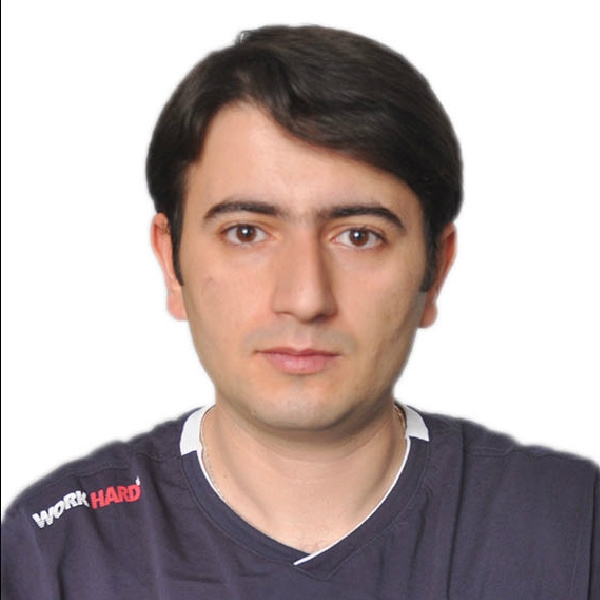
Analysis of Path Stability within Autonomous Systems
Authors – Khalid Bakhshaliyev, Muhammed Abdullah Canbaz, and Mehmet Hadi Gunes; University of Nevada, Reno
Read Abstract
Interactive and multimedia applications depend on the stability of end-to-end paths on the Internet for predictable performance and good quality of service.
On the other hand, network providers depend on multiple paths to ensure fault tolerance and use load balancing between these paths to enhance the overall network throughput.
In this study, we analyze the path dynamics within service providers’ networks using a month of measurement data collected approximately every 15 minutes. We observe that 13.2% of ASes contain routing loops within their network indicating misconfiguration of routers. Couple of ASes had over a million loops with over 100 routers causing loops in path traces.
Additionally, 77.6% of end-to-end routes have at least two alternative AS paths with some end-to-end routes going through hundreds of different AS paths.
Analyzing trace segments between ingresses and egresses of an AS, we realized more than a third of the backbone ASes have consistent routing between any node pair, but others implement load balancing or have inconsistent routing policies across their network.

Membrane Distillation-Crystallization (MDC) For Minimizing Desalination Concentrate
Authors – Evangelos Balis and Sage Hiibel; University of Nevada, Las Vegas
Read Abstract
Many of the broadly used membrane-based separation methods aimed at water treatment for industrial applications result in a highly-concentrated brine that requires disposal or further treatment. The concentrated brines are a significant challenge because of the negative environmental impacts when left untreated and the high capital costs associated with treatment. Membrane Distillation (MD) and Membrane Distillation – Crystallization (MDC) are two techniques used for zero liquid discharge (ZLD) applications. MD is a thermally induced process that involves the transport of vapor from an aqueous concentrated solution through a hydrophobic, microporous membrane. The driving force of this process is the vapor pressure difference generated by a temperature difference between the feed and the distillate side of the membrane. MDC as a process combines MD with a crystallization unit that produces distillate water while recovering solid salts.
The objective of this project is to investigate the MDC system as a method to treat brackish waters to minimize the desalination concentrate and maximize water recovery. For this purpose a bench-scale MDC setup will be utilized that will involve a Direct Contact Membrane Distillation (DCMD) unit and a crystallization unit. The crystallization unit will include a novel extended surface, multi-stage, cascading crystallizer; the extended mesh surfaces will provide nucleation sites and support for crystals to grow out of the liquid phase to increase solid salt recovery. The effluent from MD will be fed from the top inlet of the crystallizer and it will flow via gravity through multiple trays to a bottom basin where the outlet is located. The temperature of each tray will be measured by thermocouples. Salts will be removed via crystallization that will begin at the water-air-solid interface of the extended mesh. Flow rates in the distillate and feed side will be maintained at 1.0 L/min and inlet MD feed temperatures will be optimized between 50 and 80 oC. The DCMD configuration will include a commercial flat sheet PTFE membrane and the membrane test cell with mesh spacers in the feed- and distillate-side channels to minimize temperature polarization and promote mixing. A synthetic salt composed of potassium chloride (KCl) and sodium chloride (NaCl) at 80% of their respective solubility limits will be used to validate the system. During operation, conductivity in the heating tank and the distillate overflow tank, as well as the tray temperatures, will be monitored in LabVIEW 2016.
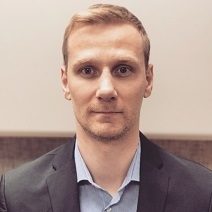
The Impact of Waters of Lesser Quality on Soiling Removal from Photovoltaic Panels
Authors – Alisson Boeing, Dr. Jacimaria Batista, and Dr. Spencer Steinberg; University of Nevada, Las Vegas
Read Abstract
Soiling, bird droppings, or the accumulation of dust on the surface of photovoltaic cells, can significantly reduce the solar energy absorption and produce power losses. In solar plants where soiling is a problem, solar facilities use demineralized or distilled water for washing the panels to avoid mineral scale deposits that might interfere with solar irradiance absorption. However, in arid and dusty environments water is normally scarce. For cleaning solar panels, the use of lesser quality water in lieu of the industry-standard demineralized water could conserve fresh water. The objectives of this research were: (I) evaluate the impacts of lesser quality water to wash solar panels on the energy output of photovoltaic systems. (II) Determine if the use of water of lesser quality promotes the deposition of any substances on the solar panel surface that can be detrimental to their performance. (III) Determine the chemical composition of the dust accumulated on the panels on the solar system where the research is being performed. A group of 264 photovoltaic panels, facing due south with a tilt angle of 32 degrees, located at the West Yard of the City of Las Vegas, Nevada were studied. The panels have been grouped into six independent sections and each section was washed using the following cleaning methods: distilled water, treated wastewater with surfactant (Sodium Dodecyl Sulfate), treated wastewater, groundwater, and vacuum cleaner (no water – dry cleaning). One group of panels was left without cleaning (control). Panel soiling cleaning was performed manually using a soft cleaning brush. Three gallons of water were used to wash each group of panels. In this study, the dust did not seem to have a great effect on the system performance. The percentage mean efficiency reduction caused by dust in the control group was around 1.88%. The compacted soil with the presence of small rocks in the solar site may have helped avoiding the presence of dust on the arrays. Furthermore, this research revealed that cleaning the solar panels with distilled water was more effective when compared with the other cleaning groups. During the cleaning schedule period (8 total) the distilled water recovered a mean normalized efficiency of the system by around 1.32%, followed by the treated wastewater (0.92%), treated wastewater with surfactant (0.73%), vacuum cleaner (0.27%), and groundwater (0.24%). In addition, the results indicated that the dust particles accumulated on the panels contained silicon (Si), oxygen (O), aluminum (Al), carbon (C), chlorine (Cl), sodium (Na), potassium (K), and other elements. It was concluded that the dissolved minerals in the wastewater and principally in the groundwater negatively impacted the performance of the system (power output). Inadequate or inefficient cleaning methods, such as the use of groundwater to clean PV panels, can end up consuming more time and increasing costs.

Application of Energy-Water Nexus Approach for Treatment of Drinking Water in the Southwest
Authors – Saria Bukhary, Jacimaria Batista, and Sajjad Ahmad; University of Nevada, Las Vegas
Read Abstract
Water is crucial for energy production and conversion, and energy is crucial for various water related processes including water conveyance, treatment and distribution. Sustainability of water and energy are inextricably linked with each other. The current research involved the application of water-energy nexus approach for treatment of drinking water, which is an energy-intensive process and essential for safeguarding public health. Environmental impacts of the nexus are carbon emissions, which were reduced by using distributed solar to fulfill the energy requirements of three drinking water treatment plants (DWTPs), located in southwestern United States. The three plants differed by capacity (10 MGD, 90 MGD, 300 MGD), raw water source (groundwater, river, lake), and unit processes involved for treatment of raw water (in-line filtration, conventional filtration, direct filtration). Energy consumption was determined for various energy driving units. This, along with the existing acreage of the plant and economic feasibility; the DWTP was sized for solar photovoltaics (PV). System Advisor Model was used for the performance and economic analysis of the solar system. Associated reduction in carbon emissions was also estimated. Energy intensity was determined as 153.7, 165.4, and 508.1 Wh m-3 for the small, medium and large DWTP, respectively. Pumping operation was determined to be the largest consumer of electricity for all three plants and utilized about 98%, 95%, and 90% of the total energy consumption for the 10 MGD, 90 MGD and 300 MGD plant, respectively. The development of solar PV for the three treatment plants was found to be economically feasible with positive net present value, with and without battery-storage systems. However, standalone solar PV development was not profitable for the 300 MGD DWTP for offsetting the total energy consumption. Further, the economic assessment was sensitive to changes in governmental incentives and financial parameters. Existing landholdings of the plants were sufficient for solar development. Moreover, change in geographic location from the southwest to east coast US, identified governmental incentives to affect the economic feasibility of PV systems. Contributions of this study include a successful application of the water-energy nexus approach for sustainable treatment of drinking water, by offsetting the fossil-fuel based energy consumption of three existing DWTPs by means of solar development. The design equations and results for the energy consumption can be applied to other plants utilizing similar processes. With the aim of incorporating sustainability in DWTPs in the southwestern U.S., the study provides a roadmap for using solar PV for DWTPs, leading to reduction in carbon emissions, energy costs and achieving energy independence. This research contributes to objective 1 of nexus project.

Nanotechnology for Water-Less Cleaning of Solar Panels
Authors – Sanjana Das, Stephanie Silic, and Biswajit Das; University of Nevada, Las Vegas
Read Abstract
Clean energy technologies are the present focus for fulfilling the rising demand for energy across the globe. Whereas vast majorities of researchers are working on increasing the efficiency, far less investment and research have been dedicated to addressing the externalities that can be a setback for the technology deployment. One of the very important externalities among them is dust and airborne sedimentation on the solar panels over time. In order to clean the dust, most Photo Voltaic (PV) installations perform periodic water cleaning. However, as locations with higher annual solar flux are usually arid, water-less cleaning of solar panels will be of great value. While some water-less cleaning technologies currently exist, primarily based on NASA’s lunar and mars expeditions, most of these techniques are expensive and not cost effective for large-scale PV power generation.
We are currently using nanotechnology to develop a process for the water-free cleaning of solar panels, with specific focus on cost so that the technology will be cost-effective for large scale PV generation. The technology involves the use of arrays of transparent nanoparticles deposited on the solar panels using a low cost technique. The nanostructure arrays provide focused electric field to modify the electrical properties of the dust particles; the charged dust particles are then removed by electrostatic sweeping.
We have identified Indium Tin Oxide (ITO) and ZnO as the transparent conductors and have successfully implemented arrays of their nanoparticles. The fabrication process parameters were varied to obtain nanoparticles of different dimensions and densities. The nanoparticle arrays are currently being used to investigate the charging and electrical manipulation of dust particles. We are also investigating additional techniques for the low-cost synthesis of ITO and ZnO nanoparticles. In addition, we are investigating the process technology for the incorporation of a micro Faraday-cup array directly on the solar panel to provide real time dust measurement that can be used to autonomously control the cleaning frequency. Our investigations to date have confirmed the viability of a nanotechnology based low cost technique for the water-less cleaning of solar panels.
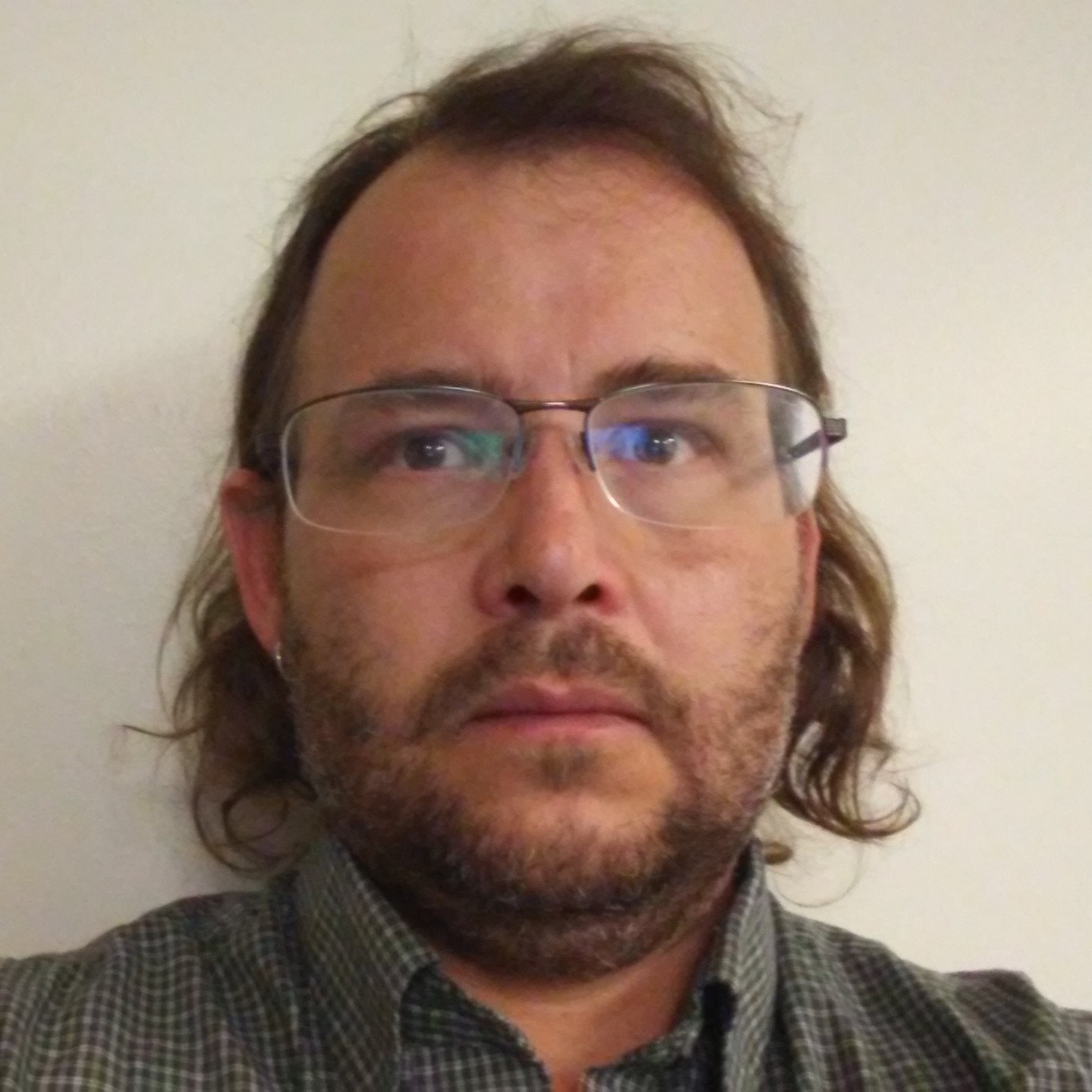
Comparison of Autonomous System Trace-Routes and Simulated Trace-Routes using a Breadth-First Search Implemented in CUDA.
Authors – Steven Fisher and Mehmet Gunes; University of Nevada, Reno
Read Abstract
In our project, we are going to investigate the router-level topology of various different Autonomous Systems and the characteristics involved. In order to aide with our investigation we will first need to obtain the trace-route data from the Autonomous Systems. In order to accomplish this we will be using both devices hosted by Caida and the devices that are hosted by UNR. These devices will be used as our vantage points for probing the Autonomous Systems. Utilizing these nodes with Paris Trace-Route, we will then be able to collect the paths that the packets use to traverse from the Ingress of the Autonomous System, to the destination IP address.
Next, we will utilize existing data to obtain the edge-list data for each investigated Autonomous System. From there we will then utilize a breadth-first search which will be implemented using a mutli-gpu cluster and CUDA, in order to attempt to speed-up the process of obtaining the shortest paths calculations from each source to the destination nodes. In addition to implementing the standard breadth-first search, we will also be implementing a modified version. This modification will allow for the breadth-first search to handle weighted nodes. Since, it has already been shown that the breadth-first search can be parallelized to a multi gpu cluster. We should be able to implement our modified version as well.
Once, we have obtained the shortest path calculations from the GPU, we will then need to compare the results to the trace-routes that were obtained utilizing the Caida devices and UNR devices. By comparing the results, we will be able to determine whether the paths that are taken by the packets as they traverse through the Autonomous Systems is the shortest or some other path. This will give us a better understanding on how the network is connected and how the packets move from source to destination.
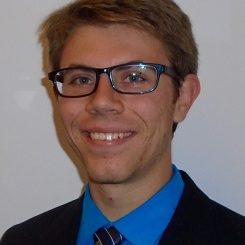
Price Elasticity of Demand and Installation Size for Rooftop Solar in Nevada
Authors – Brian Fogarty and Thomas Harris; University of Nevada, Reno
Read Abstract
Nevada and many other states have recently been undergoing dramatic shifts to their net metering policies, causing political and economic debates across the country. The changes to the policies have come under scrutiny from the public and from solar advocacy groups, while Public Utilities Commissions and regulatory bodies have defended their decisions, citing the potential cost shifting between different customer groups. As a result, the amount of reimbursements and incentives to install rooftop solar has been decreasing over time. SolarGenerations is an electrical incentive implemented by NVEnergy that provides a fixed amount to residential, commercial and industrial to offset the initial cost of installing rooftop solar. Over time, the amount provided by NVEnergy has been decreasing, thus the goal of this research analysis is to examine how the decreasing reimbursement has affected installation rates and sizes between 2010 and 2015.
Evidence from the paper indicates that elasticity estimates for demand in Nevada fit into existing literature estimates. Estimates for Price Elasticity of Demand in Nevada are about -0.2895, with the range being -0.471 to -0.10. Estimates for the Price Elasticity of Installation Size are -0.1939, with the 95% confidence interval ranging between -0.350 to -0.038. Both elasticities are inelastic, indicating that the fixed amount of money provided to installers does not affect demand or installation size.
The implications of these findings to policy makers is to allow them to reallocate resources to better encourage solar. Policymakers hoping to increase the amount of solar in a state would find that investing in up front subsidies for installation will not encourage growth in solar.
This analysis only focuses on one part of the cost mechanism for residential rooftop solar installation. While fixed subsidies upfront may not have a significant impact on installation rates, net metering credits might. It is possible and likely that when installation rooftop solar, individuals focus on the longer term credits they will receive from excess generation rather than the upfront reimbursement. As Nevada has recently undergone changes to its net metering structure, this future work will likely yield results that can inform and influence policymakers across the nation.
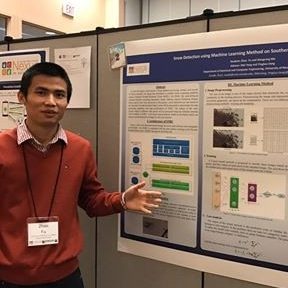
Prediction of Industrial Wastewater Quality Parameters Based on Wavelet De-noised ANFIS Model
Authors – Zhao Fu, Jiao Cheng, Mei Yang, Jacimaria Batista, and Yingtao Jiang; University of Nevada, Las Vegas
Read Abstract
Industrial wastewater quality monitoring and prediction have a strong impact on the water resource planning and environmental protection. This study is focused on investigating wastewater quality of Las Vegas Wash (LVW). Many artificial intelligence (AI) techniques have been proposed to solve the water quality prediction problem. Among them, adaptive neuro-fuzzy inference system (ANFIS) has been proven to achieve higher prediction accuracy. Since the water quality data is likely to be polluted by human errors or natural effects, we propose an improved wavelet de-noised technique combined with the ANFIS model to predict the wastewater quality parameters such as total dissolved solids (TDSs) and electrical conductivity (EC). The proposed model is calibrated, validated and tested using the data measured every two weeks since the year 2007 by Southern Nevada Water Authority (SNWA). Compared with the experimental results of other wavelet de-noised AI models, the proposed wavelet-ANFIS model achieves the best prediction performance.
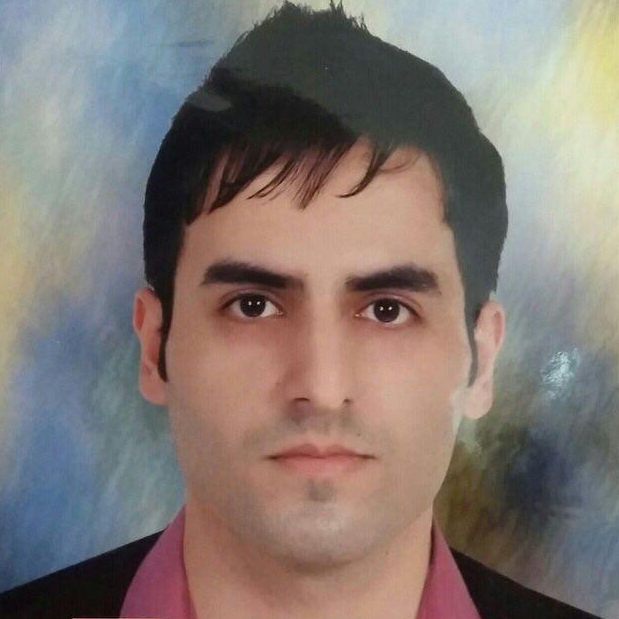
A Fuzzy-based Control Scheme for Recapturing Waste Energy in Water Pressure Reducing Valves
Authors – Oveis Asgari Gashteroodkhani, Mehrdad Majidi, and Mehdi Etezadi-Amoli; University of Nevada, Reno
Read Abstract
This project proposes a flexible and secure control scheme for operating an in-conduit hydro-powered generator. A laboratory scaled platform for investigating the hydropower generator is established to model the water supply stations. The wasted energy in the pressure reducing valves (PRVs) is captured by the in-conduit generator to generate electricity. A fuzzy-based control scheme is designed to maximize the generator efficiency such that the required water pressure and flow on the customer side are not affected due to this waste energy recapturing. In the proposed scheme, the generator operating characteristics are taken into consideration to prevent any damage. The effectiveness of the proposed scheme for different flow and pressure scenarios is evaluated by testing the experimental setup in a laboratory scaled platform for different flow and pressure scenarios.
In this project, we evaluate different pressure and flow scenarios and PRVs’ operation conditions for the actual laboratory set-up and present fuzzy control-based schemes for increasing the generator efficiency. The proposed operation and fuzzy control-based scheme is implemented and tested on a laboratory scaled platform. The test system includes two PRVs, two motor-operated valves (MOVs) and one hydropower generator. The customer pressure (??) under different flow rates must not be affected by the proposed operation scheme. Also, the generator differential pressure (Δ??) must not exceed the limit specified by the manufacturer. This limitation is more applicable for the small size of in-conduit hydropower generators which we use in our set-up. Therefore, ?? and Δ?? which are measured by transducers are the two variables that must be controlled via a control scheme. For this purpose, we develop a fuzzy control scheme and confirm its performance for different flow and scenarios.
Industry can benefit from the proposed method and increase the efficiency of water systems by reducing their consumption through recapturing the wasted energy. As a considerable amount of electricity is annually consumed by water and wastewater systems, there is a great need to recapture some of this energy. Small hydroelectric turbines and generators can take the place of existing PRVs and produce electricity using the wasted energy.

An Intelligent Protection Scheme for Microgrids using Data-mining-based Models
Authors – Oveis Asgari Gashteroodkhani, Sima Aznavi, Mehrdad Majidi, Hanif Livani, and Mehdi Etezadi-Amoli; University of Nevada, Reno
Read Abstract
This project develops a data-mining based intelligent protection scheme for fault detection and classification in a microgrid with multiple distributed generation interfaces. Microgrids are flexible and controllable systems that have the capability to integrate small-scale power units into the bulk power grid, which can avoid power disruptions and serve as resources for fast recovery during disturbances. A microgrid brings sufficient generation close to load and so can maintain the power supply in the event of faults. However, the offered resilience is seriously undermined if microgrids are not properly protected in the event of faults. This makes the protection of the microgrid a challenging task.
The proposed protection scheme retrieves one cycle post-fault current signal samples of each phase from fault inception at bus ends of feeders to derive some effective features. The retrieved current samples are pre-processed using S-transform and TT-transform to obtain statistical features, such as energy, mean, standard deviation (STD), entropy, median absolute deviation (MAD) which are further used to build a machine-learning-based model. The model is validated on the unseen data set for fault detection and classification in the microgrid. The proposed relaying scheme is developed on a real time digital simulator (RTDS) platform which is integrated with Matlab. The microgrid is simulated in RSCAD software. RSCAD includes several modules that allow all facets of the real time simulations to be created, executed, controlled and analyzed without the use of third-party products. Using the simulated microgrid, fault data is generated by simulating different types of conditions including fault resistance, fault locations, fault inception angles, and various levels of DG penetration within different topologies of microgrid, i.e., radial and mesh. The faults are simulated at different location of the line between two buses and the current is measured using the current transformers (CTs). Also, the line current measurements for no fault conditions are taken under heavy load and light loading conditions within the microgrid. Using extensive test results, the performance of the proposed intelligent relaying scheme is evaluated for the microgrid with wide variations in operating parameters for radial and mesh topology in grid-connected and islanded modes of operation.


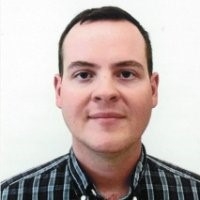
Blackbrush (Coleogyne ramosissima) Natural Recovery Following Fire in the Mojave-Great Basin Transition Zone
Authors – Dominic Gentilcore; University of Nevada, Las Vegas
Read Abstract
The Fossil and Jacob fires burned 241 ha of blackbrush (Coleogyne ramosissima) habitat in 2008 in Basin and Range National Monument in the Mojave-Great Basin Desert transition zone. Blackbrush historically has not responded well to fire, but the potential for natural recovery of the species has been proposed along within its shifting climactic envelope. These sites are at the far northern boundary of the species range near the top of its current elevational band. The burned areas were monitored with 18 plots in 2009, 2010, 2011, and 2018 to assess total plant foliar cover by species and woody plant density. By 2011, there was substantial blackbrush seedling development across the monitoring area. Upon returning in 2018, the blackbrush which established early following fire had grown and shown a significant increase in cover from less than 1% to 5.83-10.80%. Blackbrush redominated these previously burned areas in less than 10 years following fire.

On Conditional Summertime Day-Ahead Solar Irradiance Forecasting: Development Beyond Numerical Weather Prediction Models
Authors – Marco Giordano, John F. Mejia, and Eric M. Wilcox; University of Nevada, Reno and Desert Research Institute
Read Abstract
In the previous work we investigated the accuracy of numerical weather prediction (NWP)-based global horizontal irradiance (GHI), and clear-sky index forecasting over southern Nevada using standard statistical measures of predictability and forecast accuracy [Solar Energy Volume 163, 15 March 2018, Pages 610–622]. In the Las Vegas/ southern Nevada region, summertime cloud variability depends largely on the combination of tropical and extratropical synoptic-scale forcings, most of which are observable, predictable, and related to the North American Monsoon moisture surge events. We found that improved forecast accuracy was obtained at the expense of providing additional information relating regional-scale processes, that drive cloudiness and irradiance variability to the target area. We showed the seasonal dependency of the NWP forecast accuracy, and an implementation of functions which improved the accuracy of some post-processing strategies. In this companion study we examined the viability of using a geostationary satellite derived quantity – clear-sky infrared brightness temperature, as an indicator of the local “cloudiness” condition. The objective being to see if we can extract information related to regional-scale cloud generating processes. We identify 3 basic types of cloudiness conditions, and attempt to find simple time-coincident empirical relationships between measures of ground-received solar irradiance, and the satellite observed TBrightness. We specifically made use of the NOAA’s GOES West (Geostationary Operational Environmental Satellite) Infrared Channel 4 (IR04) having a 10.7 micron centered wavelength dependence – which is normally devoid of atmospheric attenuation (a “window” region), and recorded every 15 minutes throughout the day. [Data is available through the NESDIS National Environmental Satellite Data and Information Service online portal]. Pixels from the GOES images were redacted to match those above the ground footprint having a radius of ~ 11.2 km centered on the coordinates of the Las Vegas NREL radiometer location. We made use of both GOES IR TBrightness, and NREL GHI during a period from 01.01.2015 through 11.01.2016 [data set 1], and 01.01.2015 through 01.01.2018 [data set 2]. The data was combined into a single set by selecting only the nearest matching time coincident GOES records to within +/- one minute of the coincident ground-based NREL record. Studies using a simple set of descriptive measures e.g. TB minimum,TB maximum, TB average and the TB standard deviation, (from the pixel set) showed trends in satellite retrieved cloud-top temperatures do indicate episodes of local cloudiness, and may be cautiously used as indicators/predictors of the onset transition into, and transition out of cloudy conditions (possibly as a proxy for reduced GHI). Interpretations of the preliminary results are complicated by factors involving the implementation of higher dimensional analytic strategies. These studies have yet to incorporate temporal lag measures within the combined data. The added information from geostationary satellite retrievals can be used to enhance NWP forecasts of GHI, and should be considered in deeper detail through future studies incorporating the GOES-R data products of greater spatial and temporal resolution.
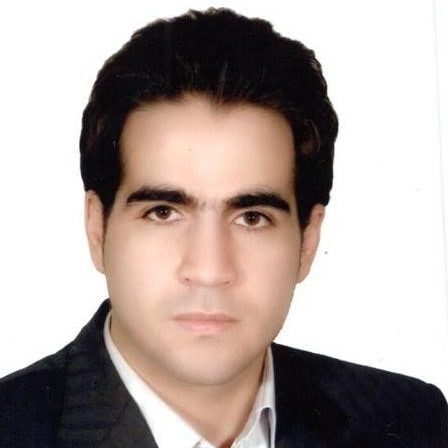
Decentralized Dynamic State Estimation with Missing and Delayed PMU Measurements
Authors – Amir Ghasemkhani and Lei Yang; University of Nevada, Reno
Read Abstract
Dynamic State Estimation (DSE) is a prominent tool for enhancing reliability and stability of power systems. Recently, digital data recorders, such as Phasor Measurement Units (PMUs), have been introduced to monitor power system dynamics. These units utilize Global Positioning System (GPS) timestamps to synchronize the measurements for state estimation. However, system disturbances due to sensor failures or communication outages can cause missing and delayed data. Moreover, considering tremendous integration of unpredictable and intermittent Distributed Energy Resources (DERs), real-time estimation and control have begun to play a significant role in handling the uncertainties and disturbances in the electricity distribution grids. Thus, the problem of DSE with missing and delayed measurements needs to be addressed for future distribution grids with proliferated DERs to ensure reliability, security, and resiliency of power grids.
This paper studies decentralized Dynamic State Estimation (DSE) with missing and delayed PMU measurements in power systems. As data loss or delay can negatively affect the system state estimation and control, it is of paramount importance to account for the impact of data loss and delay. To this end, we propose a decentralized DSE scheme by utilizing a discrete Unscented Kalman Filtering (UKF). The proposed approach modifies the existing UKF by modeling the arrival rate of missing and delayed measurements as a stochastic process. We observe that there exists a critical value (threshold) for the measurement delay that depends on the measurement processing time of the state estimator, and measurements received beyond this threshold cannot be utilized for the DSE due to limited computation power. Numerical simulations under fault conditions in the simulated microgrid show that the proposed scheme is able to avoid triggering unnecessary controlling and protection commands in the presence of contingencies.
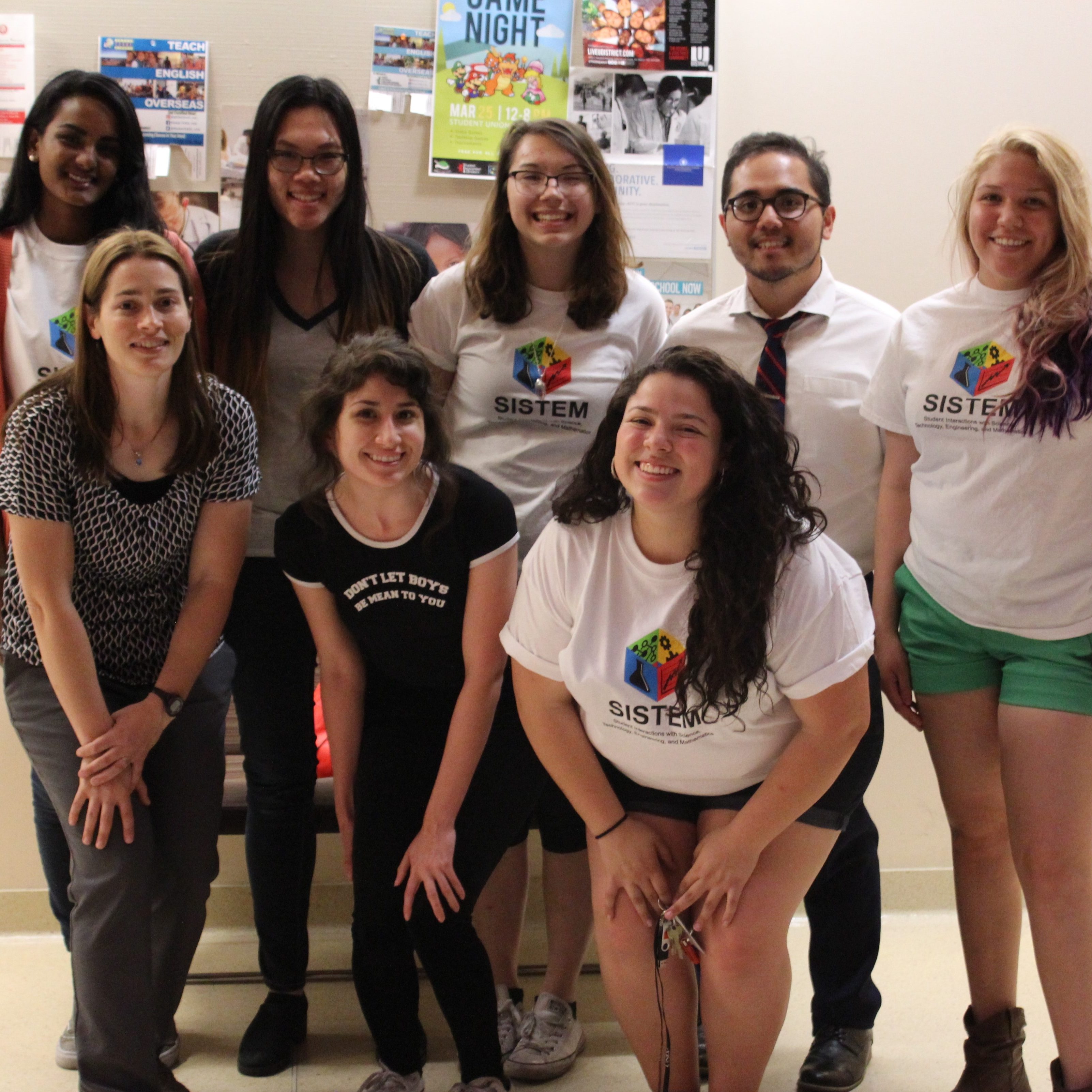
Student Interactions with Science, Technology, Engineering and Math (SISTEM)
Authors – Elizabeth Heider, Johana Iglesias, Dr. Erica Marti, and Schetema Nealy; University of Nevada, Las Vegas
Read Abstract
Student Interactions with Science, Technology, Engineering and Math or SISTEM is one of 5 Workforce Development & Education initiatives at the University of Nevada, Las Vegas which are funded by the Nexus in Nevada grant. The goal of the program is to increase awareness and excitement about STEM disciplines by exposing high school students to the wide variety of careers under the STEM umbrella. The program was held four times in 2016-2018 with over 150 high school student participants (grades 9-12). SISTEM is a free, five-week program on one evening each week. During each session, students have two guest speakers who give presentations describing their careers in STEM, their journey and studies, as well as engage the students in a hands-on activity. SISTEM also gives high school students an introduction to college life, resources available in college, research opportunities in college, and advice on transitioning to higher education.

Generalized Software Interface for CHORDS: Open Source Plug-and-Play Solution for Data Vizualization
Authors – Pattaphol Jirasessakul, Zachary Waller, Sergiu Dascalu, Connor Scully-Allison, Vinh Le, Hannah Munoz, and Scotty Strachan; University of Nevada, Reno
Read Abstract
The goal of this project is to create an open-source near-real time interface between the Nevada Research Data Center and CHORDS, a cloud-hosted data visualization package. While this project is primarily being built for the NRDC, there is an emphasis on tooling the project to be as generalized and generic as possible. The goal end product will be a plug-and-play solution that will allow any small or medium sized science team to take advantage of the benefits of data visualization at no cost and limited technical knowledge. An open-source approach will allow for wide adaptability and customization of the package and be offered as a free alternative to existing proprietary data visualization solutions.


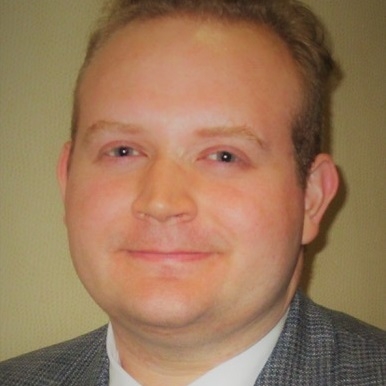
Energy Transport Simulation and Experimental Characterization of Mesoscale Solar Coating Materials
Authors – Dale E. Karas and Jaeyun Moon; University of Nevada, Las Vegas
Read Abstract
For solar energy applications, a special class of inorganic oxides can be synthesized as nanoparticles via hydrothermal and co-precipitation methods, with this material successively ported to spectrally-selective absorber coatings via a SiO2 binder. In tandem with solar concentrators, these coatings support the conversion efficiency of solar-thermal energy storage, supporting the viability of solar technologies for renewable power generation. In observing the surface morphology of such coatings, determined by Field-Emission Scanning Electron Microscopy (FESEM) data, significant correlation is calculated to the spectral absorptance, optical scatter, and irradiance/exitance distributions of interacting solar radiation. Surface texturing can also further improve the material’s absorber efficiency by enhancing spectrally-selective behavior: the capacity for coatings to achieve high UV-VIS absorptance and low thermal emittance to reduce waste heat through NIR re-radiation. While surface and volume modifications can be made to the coating material’s structure in post-treatment, we have demonstrated the use of sacrificial polymer beads to be used in synthesis to simplify the formation of porous structuring, generating light-trapping structures for specific wavelengths that improve absorber performance. This work targets the chemical synthesis optimization of such absorber coating materials to reliably form spectrally-selective surface texturing. A class of cuprous bi-metallic inorganic oxides (CuO, Cu0.15Co2.84O4, and Cu1.5Mn1.5O4) are synthesized as nanoparticles for their use as potential material candidates for solar absorbing applications. Image processing on coating microscopy data is then used in a custom simulation to correlate material properties and structuring. To ensure an accurate representation of the sample morphology, multiresolution analysis using wavelet transforms is performed to construct approximated surface profiles of the material. This mathematical model is used in conjunction with differential raytracing methods to calculate the resulting optical scatter from re-radiated solar energy. Ultimately, we propose this simulation for broader applications of chemical and material analyses, supporting advances in computational chemistry.
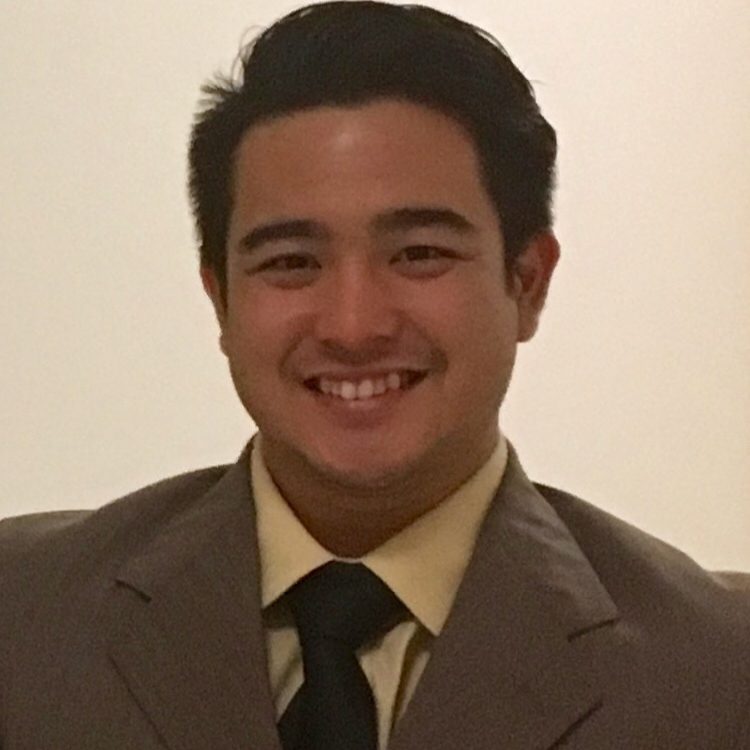
Numerical and Experimental Analysis of Dry Cooling
Authors – Kaipo Kekaula, Yitung Chen, and Robert Boehm; University of Nevada, Las Vegas
Read Abstract
Increased energy demand stemming from growing populations and limited water resources has resulted in substantial research into methods of reducing water consumption in thermal power plants. Air-cooled condensers (ACCs) can significantly lower water requirements in these power cycles by using ambient air as a coolant in a process called dry cooling. Despite the sizeable reduction in water usage, these systems are not as commonly implemented due to comparatively high capital costs and decreased overall system performance when compared to their water-cooled counterparts. Therefore, in an effort to improve the efficiency of dry cooling, a series of computational models have been developed to investigate potential design improvements. A coupled model to simultaneously describe the heat and mass transfer effects for both the air and steam domains is first implemented. In this study, the air-side fluid flow is modeled using ANSYS Fluent and a Nusselt thin film analysis is then used to describe the film thickness in the upper region of the tube interior with a pool condensation model used to define the axial flow in the lower region. The commonly used isothermal boundary condition is relaxed by applying the heat transfer at the tube surface on the air-side to the inside tube surface during the film analysis to investigate the impact on the local film thickness and the overall heat transfer coefficient of the condenser. It was found that both inclination angle and air-side angle of attack both had large impacts on the performance of the system and optimal design parameters were presented. Following this, a geometric optimization of condenser tube cross-section using an entropy generation minimization technique was combined with a genetic algorithm (GA) to improve condensation heat transfer. This study introduces a thermodynamic optimization design approach to laminar film condensation in non-circular tube geometries. The surface of the tube cross-section is defined using a cubic Bezier curve and an entropy generation minimization technique is employed to seek a thermodynamically favorable cross-section. The control points of the cubic Bezier curve are optimized using a genetic algorithm (GA). Expressions are derived for the conflicting objectives, entropy generation caused by heat transfer and the entropy generation caused by pressure loss. A modified entropy generation number is introduced to combine the multi-objective problem into a single objective optimization problem using a fixed operating point technique and a single solution is presented which minimizes the pressure loss for a given heat load and inclination angle. It is shown that single solution can be found which minimizes entropy generation for a given inclination angle relative to a cylinder with equivalent surface area. Finally, a numerical model of vapor-liquid condensation in the air-cooled condensers in the presence of non-condensable gas was developed to study the impact of air leakage into the condenser tubes. These improved dry cooling models can assist in design of future air-cooled condensers and improve the viability of power generation from solar energy in climates that contain high solar irradiance but lack large sources of readily available cooling water.
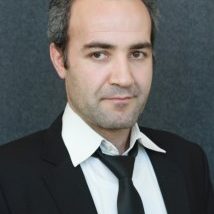
Anomaly Classification and Localization in Distribution Networks Using a Quotient Gradient System
Authors – Hamid Khodabandehlou, Iman Niazazari, Hanif Livani, and M. Sami Fadali; University of Nevada, Reno
Read Abstract
The classification of anomalies or sudden changes in power networks versus normal abrupt changes or switching actions is essential to take appropriate maintenance actions that guarantee the quality of power delivery. This issue has increased in importance and has become more complicated with the proliferation of volatile resources that introduce variability, uncertainty, and intermittency in circuit behavior that can be observed as variations in voltage and current phasors. This makes diagnostics applications more challenging. This paper proposes using quotient gradient system (QGS) to train two-stage partially recurrent neural network to improve anomaly classification rate in power distribution networks using high-fidelity data from micro-phasor measurement units (µPMUs). QGS is a systematic approach to finding solutions of constraint satisfaction problems. We transform the µPMUs data from the power network into a constraint satisfaction problem and use QGS to train a neural network by solving the resulting optimization problem. Simulation results show that the proposed supervised classification method can reliably distinguish between different anomalies in power distribution networks. Comparison with other neural network classifiers shows that QGS trained networks provide significantly better classification. Sensitivity analysis is performed concerning the number of µPMUs, reporting rates, noise level and early versus late data stream fusion frameworks.
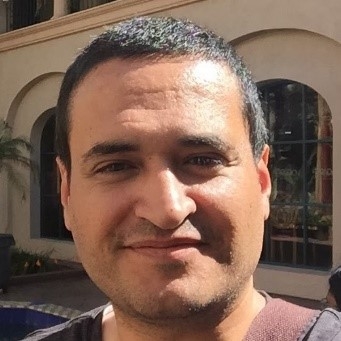
Modern Software Infrastructure for Developing Cloud Applications
Authors – Jalal Kiswani, Dr, Sergiu Dascalu, and Dr. Frederick C Harris, Jr.; University of Nevada, Reno
Read Abstract
In modern software projects development such as cloud-based applications, there are important activities that should be performed during the project’s life cycle. Unfortunately, many of these activities are time-consuming and expensive. Furthermore, they are either performed manually or in basic approaches by different professionals. Such activities include: version control, project structuring, development environment preparation, software testing, building, packaging, deployment, and management of dependencies including third party libraries and application programming interfaces (APIs). This poster discusses the rationale behind these activities, and how their automation can reduce time and cost of building software projects, as well as increase software quality. In addition, the poster takes a look at several of the available open-source resources as well as mature free software tools that have been implemented by practitioners using Java technology.

Modeling Water Redistribution in a Near-Surface Desert Soil
Authors – Yuan Luo and Markus Berli; Desert Research Institute
Read Abstract
Hot deserts are prime locations for solar energy generation but also fragile, water-limited ecosystems. The overarching goal of this study is to shed light on the impact of solar arrays on the hydrology of desert soils. In a first step, we explored how solar arrays lead to concentrated infiltration of rainwater into the soil using numerical simulations. We were able to simulate soil moisture distribution within solar arrays using a recently developed numerical model. But we also noticed that our basic understanding of the moisture dynamics of a near-surface desert soil is still pretty limited. This is an important knowledge gap since desert soils cover about one third of the Earth’s land surface and some of the fastest growing communities are located in deserts. Studies by Koonce (2016) and Dijkema et al. (2017) specifically addressed the moisture dynamics of a near-surface arid soil. Koonce (2016) found that most of the moisture dynamics occurs within the top centimeters to decimeters of the desert soil, analyzing precipitation, evaporation and soil moisture data of a four-year period from 2008 to 2012 from the three SEPHAS weighing lysimeters in Boulder City, NV (https://www.dri.edu/sephas)..
Dijkema et al. (2017) developed a soil physics model in HYDRUS-1D to quantify the moisture dynamics of arid soil using SEPHAS lysimeter data. The model by Dijkema et al. (2017) successfully simulates water infiltration, redistribution and evaporation for moist soil conditions (volumetric moisture content >10%, matric potentials < pF 2). For dryer soils (volumetric moisture content <10%, matric potentials > pF 2), however, the model by Dijkema et al. (2017) systematically underestimates water redistribution and evaporation due to limitations of the van Genuchten-Mualem water retention and hydraulic conductivity functions (van Genuchten 1980). The goal of this final step of the study is to improve the HYDRUS-1D model developed by Dijkema et al. (2017) to simulate water redistribution in near-surface desert soils by improving the model’s water retention and hydraulic conductivity function. The recently developed Peter-Durner-Iden (PDI) model (Peter et al. ) is potentially better suited to simulate water flow in dry soil since it is coupled with capillary, film and vapor hydraulic conductivity models to describe a more complete moisture range than the van Genuchten-Mualem hydraulic conductivity function does. Meanwhile, by using soil moisture and matric potential data from HYPROP and WP4 devices (both METER. Inc.), paired with data from the SEPHAS weighing lysimeters, we will be able to obtain a more accurate soil water characteristic and water retention curve to calibrate and validate the new model.
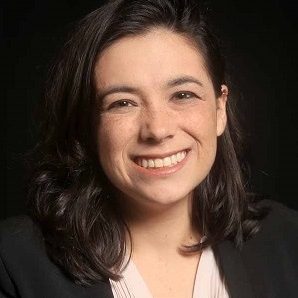
Using Webcams in Sensor Networks to Estimate Snow and Cloud Coverage
Authors – Hannah Munoz; University of Nevada, Reno
Read Abstract
Research in earth sciences increasingly implement observations using automated camera images of study sites. Current software for image analysis in this field are lacking and are commonly restricted to qualitative interpretation instead of quantitative methods. Analysis of images from sensor network sites can greatly benefit from additional software which can estimate changes in other color channels of the image. My project seeks to develop a simple analysis software for scientists that are interested in analyzing snow and cloud cover. The software uses a graphical user interface to select time series images, define regions of interest within them, and quantify snow or cloud cover using various image processing techniques. Scientists can use the resulting numerical CSV output to validate local observations or other remote sensing data

Experimental Setup for the Evaluation of Water Use Reduction on a Solar Panel with a Hydrophobic Surface Treatment
Authors – Blake Naccarato and Dr. Kwang J. Kim; University of Nevada, Reno
Read Abstract
The performance of photovoltaic solar panels is reduced when the panel surface is soiled by inclement weather conditions. Water is used to clean soiled solar panels, which has an important environmental impact. A hydrophobic surface treatment affects the surface energy on a panel and may reduce water use in one of two ways. Firstly, it may reduce the tendency for dust adhesion, which in turn decreases the frequency of cleaning necessary. It may also reduce the quantity of water needed to achieve a given degree of cleaning, due to changes in the way water interacts with the panel surface. An experiment has been devised that will allow for this hypothesis to be tested.
The current-voltage characteristic (IV curve) will be obtained for a variety of panel conditions. The IV curve is determined through the use of a BK Precision 8500 DC Electronic Load and a LabVIEW interface. IV curves are obtained for IEC standard testing conditions, with a pulsing lamp that is representative of the solar spectrum. The IV curve is first found for a panel with an untreated borosilicate glass covering. The IV curve is then obtained for a panel with glass coverings with various hydrophobic surface treatments. Any panel performance change due to surface treatments may be noted.
IV curves are then obtained after panel coverings have been soiled by a representative analog to natural dust. Silicate-based nanoclay is used as the dust analogue. The dust is applied in a controlled manner to each panel covering. One application method considered is to spray the panel coverings with a solution of nanoclay in water, and allowing the soiling agent to dry and stick to the panels. Dry soiling methods are also being considered. Experimental variables include the concentration of the soiling agent as well as the total mass of particulate applied to panel coverings. The obtained IV curves represent panel performance in the soiled condition.
IV curves are obtained once more after panel coverings have been rinsed in a controlled manner. One method considered is the elevation of panel coverings at an angle, with subsequent rinsing by deionized water. Water may be applied by controlled deposition at the edge of the panel covering at highest elevation, or by spraying. Experimental variables include the amount of water used, angle of elevation of the panel, and specific rinsing method. The obtained IV curves represent panel performance in the rinsed condition.
By comparison between initial, soiled, and rinsed panel performance, a conclusion may be drawn as to the effectiveness of hydrophobic surface treatments in reducing the water used to maintain panel performance.
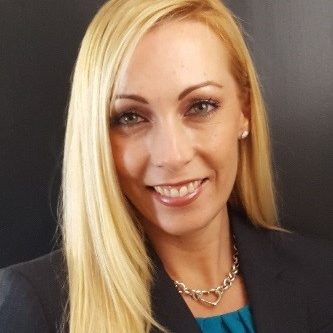
Design of a Supercritical Carbon Dioxide Brayton Cycle for Solar Dish Concentrator Clean Energy Production
Authors – Danielle Nobles-Lookingbill and Robert Boehm; University of Nevada, Las Vegas
Read Abstract
Innovative technology in clean solar energy with trivial water consumption is imperative to a successful solar energy objective. Nevada, with its uniquely immense solar irradiance, provides the foundation for solar thermal systems capable of replacing traditional heat source power cycles. Coupling concentrated solar irradiance with a supercritical carbon dioxide Brayton cycle will compound the capacity for increased efficiency with decreased environmental and geographical footprints. The UNLV research system, containing two custom and one internationally collaborative heat exchanger prototypes, is a demonstration of the innovative component and system design needed to reach the next level in clean solar energy. With nearly no need for cleaning, the UNLV system is designed to move solar technology toward meeting ambitious, water conscious, renewable energy goals. This new experimental system will bridge gaps in both economic trade-offs inherent in optimization and modeling transient cloud coverage, while facilitating cutting edge research work.
As we move toward energy independence and more ambitious clean energy goals, solar energy research must push the efficiency limits of traditional energy generation systems. Increases in efficiency can be achieved by increasing the hot temperature of the power cycle. Recent research demonstrates the potential for increased efficiency and a vastly smaller component size when supercritical carbon dioxide Brayton power cycles are used. To achieve the high working fluid temperatures needed for efficiency gains, concentrated solar and nuclear heat have been theoretically evaluated. Initial testing of the UNLV experimental concentrated solar power system shows the potential for higher temperature differences, leading to these higher efficiencies.
Photographic flux mapping [1] was used to provide solar flux information leading to the custom design and on-site fabrication of the solar receiver. A custom air-cooled heat exchanger, with expansion capabilities for additional cooling, was designed and fabricated for heat rejection. To further increase efficiency, an internationally collaborative custom minichannel heat exchanger was added as a system recuperator, and will be tested in both straight channel and zigzag channel geometries. On-sun experimental tests of the solar receiver and heat rejection systems have indicated system capability to both reach high temperatures and reject the heat required to achieve accelerated efficiencies.
For optimal system performance, optimized turbomachinery is required. The turbine and compressor wheels are optimized for this 100 kW system at a calculated diameter of 0.35 in. Impossible to fabricate using the UNLV Machine Shop CNC machine, a sized up outer diameter based upon the literature and the SCO2 experimental system at Sandia National Laboratory [2] was used. All components are mounted on a dish concentrating solar tracking system for on-sun experimental testing. An EES computational model of the cycle, to be optimized and validated based on data collected, will describe the system.

Teacher Professional Development
Authors – Morgana Krause, Milady Ramirez, and Francisco Chavarria, Erica Marti, Schetema Nealy, Jacimaria Batista, Aaron Sahm, and Danielle Nobles Lookingbill; University of Nevada, Las Vegas
Read Abstract
The goal was to introduce the engineering design process to middle and high school teachers through a summer professional development course. Teachers were trained on the engineering design process and became familiar with the three main components: defining the problem, developing a solutions, and optimizing. Teachers used this knowledge to build their own solar thermal water heater or water treatment kit while taking criteria (e.g., cost, stability, functionality, and easy assembly) and constraints into consideration. After constructing their kits, teachers had to develop lesson plans on how they would incorporate the design process and the kits in the classrooms. All teachers reported high or very growth in various aspects of engineering design: understanding criteria and constraints, creating an evaluation matrix, generating and evaluating solutions, and comfort in teaching engineering design. Overall, becoming familiar and using the engineering design process first hand helped teachers realize that the engineering design process can be incorporated in many of the activities used in schools.
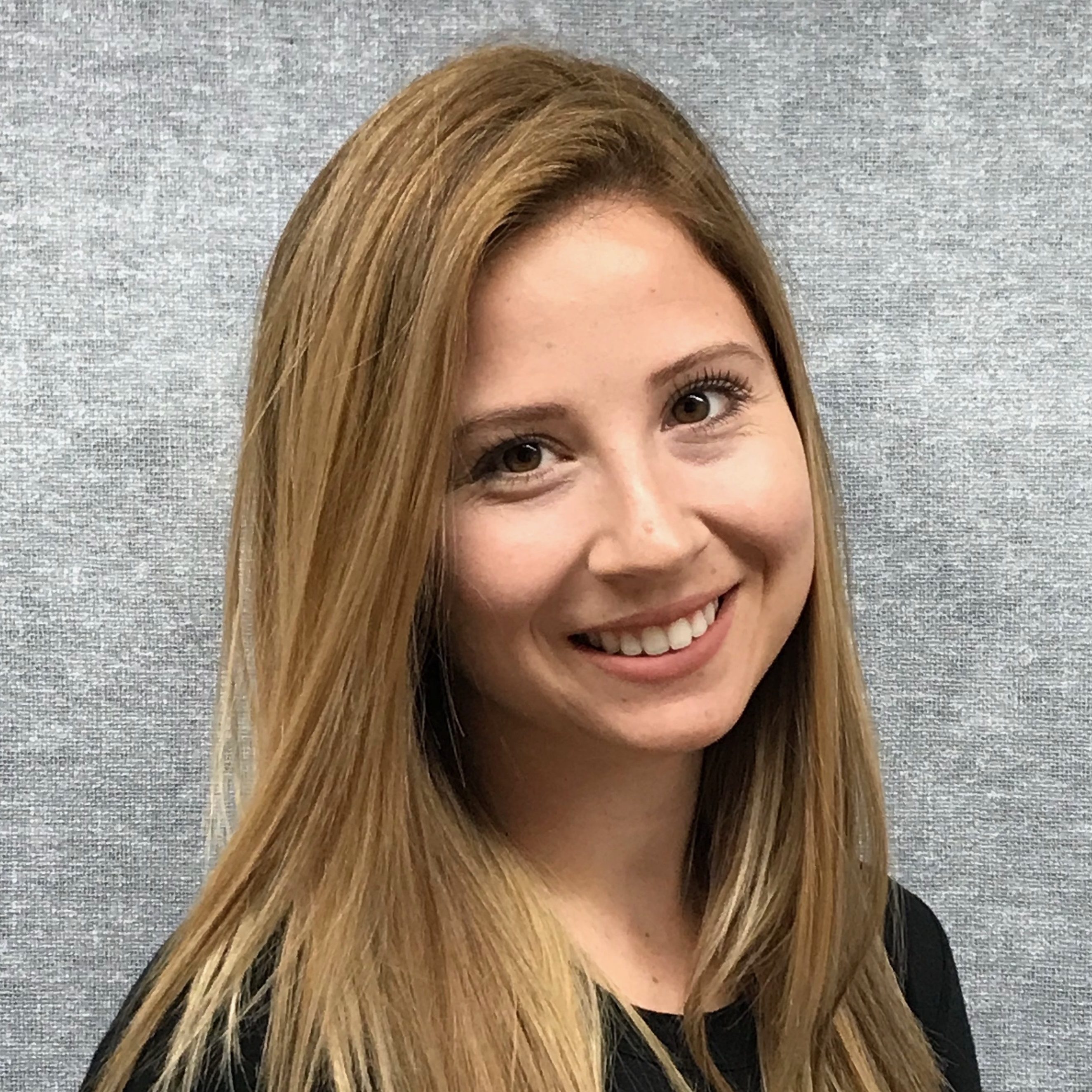
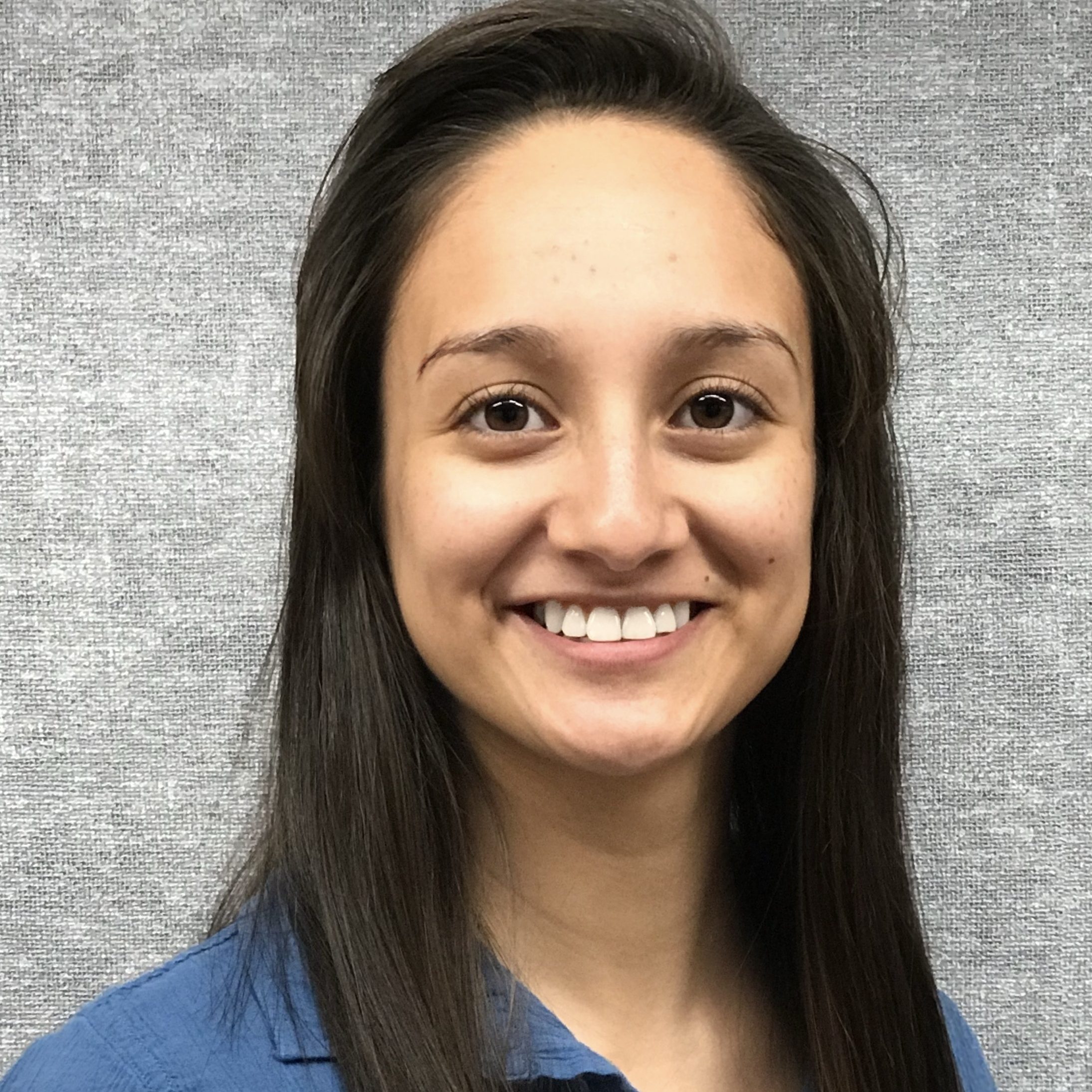


An Educational Water-Cycle Ride Using a Motion Simulator Platform
Authors – Alex Redei and Dr. Sergiu Dascalu; University of Nevada, Reno
Read Abstract
This research examines the public’s understanding of the water cycle, and attempts to find a novel way of presenting it. In this poster, we introduce “The Water-Cycle Ride,” a theme park-esque edutainment ride. By incorporating high definition graphics, surround sound, a motion platform, and an educational video from NASA-Ames, we introduce a new level of thrill to a normally passive subject. Two riders, secured with a seatbelt and harness, can experience the ride together, which lasts about 3 minutes. They are taken through water’s three states: solid, liquid, and gas, and it’s hydrogeology on earth (runoff, groundwater, etc). At appropriate intervals, we introduce g-forces to the simulator so riders experience a rising feeling when evaporation is being explained, or a falling feeling when rain droplets are formed. This poster shows how the introduction of a little thrill to an educational subject can engage the public.

Near Real-Time Autonomous Quality Control For Time-Series Environmental Sensor Data
Authors – Connor Scully-Allison, Hannah Munoz, and Vinh Le; University of Nevada, Reno
Read Abstract
The Nevada Research Data Center (NRDC) QC App is a web application that provides technicians and researchers with an interface to visualize, examine and quality control data streams from remote NRDC research sites. This application offers technicians a streamlined interface and dashboards for quick access to the sites and data most urgently in need of review. The core functionality of this application comes from a server side “flagging” service which automatically flags incoming data points as erroneous when they fail one of many tests checking for validity according to various metrics. This application furnishes NRDC data stewards with a dynamic and robust toolkit to ensure that more meaningful and contextual data sets are reliably conveyed to the researchers working with them. A web based application like this represents the future of time series Quality Control in the internet age.




Water Use in Utility-scale Solar Plants in Nevada and Efficiency Loss on Small-scale Solar Plants Due to Soiling
Authors – Amanda Tanaka, Dr. Jacimaria Batista; University of Nevada, Las Vegas
Read Abstract
Solar energy has been an emerging technology in the past few years, however, it requires a lot of water during operations, especially for concentrated solar power (CSP) plants using wet cooling systems but also for panel/mirror washing on both CSP and photovoltaic (PV) plants. Water resources are scarce in the regions where solar plants are normally implemented since they are typically desert like areas with arid climate. This research focus in two aspects of water use in solar energy: (1) Water use by large-scale solar plants, and (2) Solar panel washing in small-scale solar plants installed in public urban landholdings. Twenty-nine U.S. states have adopted Renewable Portfolio Standards (RPS) and Goals which require that a certain amount of the energy distributed by utilities be generated from renewable sources. One potential way for utilities to meet RPS is to install solar plants in urban landholdings either public or private. In many states, solar plants have been located on top of buildings, parking garages, and in landholdings from water and wastewater treatment plants. Given the difficulty associated with cleaning these solar panels due to location, it is necessary to evaluate whether washing is worthwhile, that is, whether the energy gained from cleaner panels outweighs the cost of washing. Given the large number of solar plants located at the UNLV Campus, there exist a great opportunity to gain some insight into this research question. For the large-scale solar plants, the objective is to develop a tool that can forecast future water use based on current use in the different locations of the state. Data will be collected on existing utility-scale solar plants in Nevada, and possibly California, regarding water usage. Microsoft Excel will be used to investigate correlations in the collected data. For the small-scale plants, data from ten solar sites, located at the UNLV campus, will be analyzed, statistically, to determine whether it is worthwhile to wash the panels and minimize energy losses due to soiling. There exists one plant at the UNLV campus that has been washed. Two more plants will be washed for the research. In addition, energy data from the non-washed plants will be evaluated to determine how much energy has been lost since installation. For the large-scale plants, CSP systems are expected to have higher water usage compared to conventional energy sources. The water usage in PV systems is mostly attributed to the washing of the panels, however, some plants do not wash them due to very small losses in efficiencies from soiling. The tool will assist in making better decisions regarding washing frequency and duration or even to determine if washing is necessary. For the small-scale plants, it is expected that the solar plants have lost efficiency throughout the years since they have not been washed, however, this loss might be so small that it is not worthwhile washing the panels, when cost, work and amount of water required are taken into account.

Solar and Water Laboratory Experiences
Authors – Amanda Vazquez, Alicia Qiu Cheung, Dr. Erica Marti, and Schetema Nealy; University of Nevada, Las Vegas
Read Abstract
The Student Laboratory Experiences is one of 5 Workforce Development & Education initiatives at the University of Nevada – Las Vegas which are funded by the Nexus in Nevada grant. The goal of this K-12 outreach initiative is to integrate STEM studies in schools and clubs locally and statewide, increase awareness and excitement about the STEM disciplines, and increase motivation and commitment for STEM. Recommended for grades K-5, the Fan & Light kit is a compact solar kit used to demonstrate how solar energy and electricity work together to power fans and light bulbs with a photovoltaic panel. Recommended for grades 5-8, the Off-Grid kit is a portable kit containing a solar photovoltaic panel, microcontroller, and battery pack. The system can store energy in a battery or supply direct power to charge a cell phone or other device. Recommended for grades 6-12, the Hydro P.A.L. is a portable water treatment kit to investigate how different treatment materials (e.g., gravel, sand, and activated carbon) remove contaminants from water. Students change the order of the treatment materials and test the water quality before, during, and after to understand why the different treatment materials are used. Recommended for grades 8-12, the Sol Traveler is a compact solar water heater that uses two types of solar technology: photovoltaic to power the pump and solar thermal to heat the water. Overall, the program was a great success. The UNLV Workforce Development team outreached to over 4000 students and 400 teachers in the Las Vegas Valley and surrounding areas in the course of a year. UNLV Workforce Development is currently working on 22 solar kits to be distributed across Nevada for permanent placement or donation to continue the laboratory experiences after the grant has concluded.


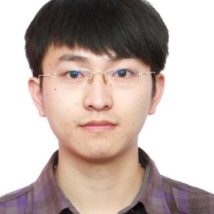
Modeling Error Learning based Post-Processor Framework for Hydrologic Models
Authors – Rui Wu, Sergiu Dascalu, Frederick C. Harris Jr., and Lei Yang; University of Nevada, Reno
Read Abstract
This poster presents how to improve the accuracy of hydrologic models using machine learning models as post-processors and presents possibilities to reduce the workload to create an accurate hydrologic model by removing the calibration step. It is often challenging to develop an accurate hydrologic model, due to the time-consuming model calibration procedure and the non-stationarity of hydrologic data. We propose a modeling error learning based post-processor framework by leveraging this correlation to improve the accuracy of a hydrologic model. To tackle the non-stationarity issue of hydrologic data, a moving window based machine learning approach is proposed to enhance the machine learning error predictions by identifying the local stationarity of the data using a stationarity measure developed based on Hilbert-Huang transform. Two hydrologic models are used to evaluate the proposed framework and the results show our method can improve the hydrologic models’ accuracy.
